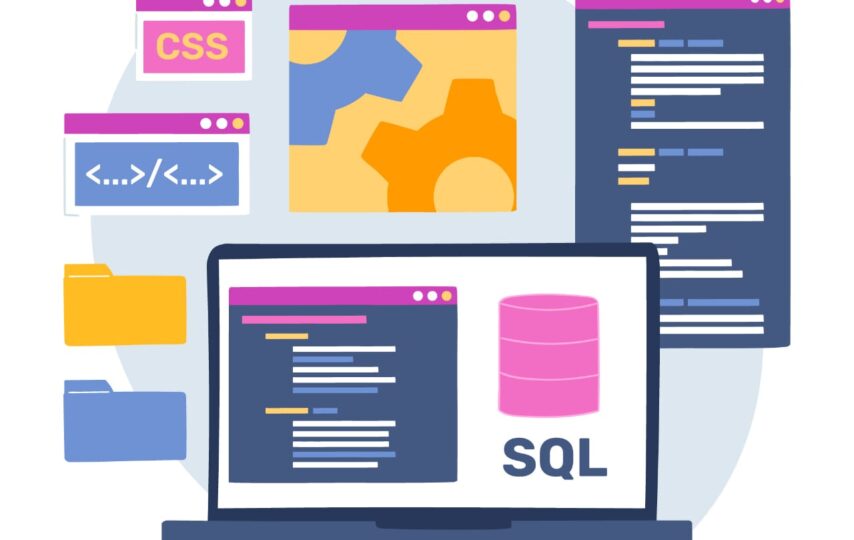Technology is ever-evolving. Sometimes, the technology that we use gets outdated. It is crucial to know when to upgrade your tech game with newer technologies to keep up with the market. As such ASP.NET is a well-known solution for building applications across the market today, but the problem is that this technology is outdated. Many companies in the market are creating products that fail to fill aspects like extra maintenance, scalability and even offer enhanced support at times. A very few specialists are in the market who are willing to work on the same. But the problem is they are growing in number. Now, the problem requires a solution. And, the solution happens to be very simple, it is migrating from ASP.NET Web Forms to ASP.NET MVC.
For various organizations across the market, moving from ASP.NET WebForms to ASP.NET MVC is a major step towards modernisation and improved performance. Now, the question remains. How do we migrate and use this newer technology that has many benefits of its own to offer. Without further ado, let’s learn about the advantages of utilizing MVCs instead of Webforms in this article, as well as how to switch from ASP.NET Web forms to ASP.NET MVC.
Before we dive right into how to migrate from MVC to Web forms let us understand the benefits that MVC has to offer WebForms. MVC has a lot of benefits to offer, out of which the one that really tends to stand out is its novel nature. In simpler words it helps spawn a stronger focus on tools by Microsoft. This makes the task a lot easier. With this, it has a bunch of other benefits to offer. Here are a few listed below.
Advantages of ASP.NET MVC over ASP.NET Web Forms – Why Choose ASP.NET MVC?
Migrating from ASP.NET Web Forms to ASP.NET MVC? Don’t do that before you know the advantages of ASP.NET MVC over Web Forms. Listed below are the four top advantages that you must consider.
1. Quicker Response Time
One of the major advantages is that MVC responds much more quickly than the traditional Web Forms. This is possible because it eliminates the need of Viewstate and server side controls. This enables the end users to view pages faster and with smaller sizes. The overall user experience is increased because of better performance, thus encouraging more interaction with the application.
2. Reduced Coding Complexity
Compared to ASP.NET Web Forms ASP.NET MVC offers a simpler approach to writing code. This offers the developer to write a cleaner and a more organized code because of its reliability on Model-View Controller Design. When the code is easier to write, read and debug, this contributes to a significant increase in the developer’s productivity and also helps in releasing the application quickly.
3. It offers Versatility
When compared to ASP.NET Web Forms, ASP.NET MVC has more versatility to offer. Here, there is more control over the request/ response pipeline. This enables developers to easily integrate third party libraries if need be. Because of this feature, developers have scope to customize the architecture of the given application to meet the requirements of the given project. This also contributes to increased scalability.
4. Improved performance
In comparison, ASP.NET MVC is known to have improved performance. Because of the elimination of ViewState Overhead and giving more importance to the HTML Syntax, it saves the server a lot of time and renders the page faster. MVC’s are known for their lightweight design that contributes to scalability and enhanced responsiveness. This enables the programs to handle huge loads and provide better user experience in case of huge traffic.
6 Steps to Easily Migrate from Webforms to MVC
Now that we know the major advantages that MVC’s hold over Webforms Let us not waste any more time and dive right into how to migrate to MVC’s in just 6 easy steps. Follow from Step 1 to Step 6 and you will be able to use MVC’s within no time. If these seem to be too complicated, you can always hire a company offering professional ASP.NET development services.
Step 1: Start by Integrating Web API Functionality
To start off with, start rewriting your WebForms as MVC which allows the usage of Web API in your project. This also requires additional installment of NuGet Microsoft ASP.NET Web API Package and choose the programming language as per the project. Once this is done, follow the below steps
- Right click and choose ADD, then select on New Item and then choose “ Web API Controller Class.”
- Once the class is created, ensure its name ends with “Controller.”
- The next step is to enable the invocation of methods where forms are posted to the main server by implementing something called a “Post”.
- Develop a class of properties that correspond to the ID Properties of the WinForms.
Step 2: Define a clear Routing Route for Web Forms
Next, there is a need to establish a routing rule that defines URLs to which the rule applies and there also is a need for the controllers to process associated requests. This also specifies the values for the URL for the Web API. Following this, integrate the routing rule to the Application_Start within the Global.assax.file. To avoid clashes amongst the URLs, prefix the Web API Related URLs with a very short string known as “api.”
Step 3: Control the Controllers Restructuring
In this step, it is time to allow the Web API to submit data to the route defined in the previous step and also retrieve it back. There is need in the code modification as follows
<form id=“form1” runat=“server” action=“CustomerManagement”
method=“post” enctype=“application/x-www-form-urlencoded”>
This helps us to use the URL’s mentioned at the Route. This is also where the developers have to start coding from scratch within the controllers post method to kick start data manipulation in the Data Transfer Object. The developer has the choice to pick his/her code type and methodology. Once this is over, a few more details have to be paid attention to
- The code in the ASPX code file needs to be moved into the present controller method.
- Any server-side procedures implemented by Validation Control has to be combined into a new project.
- The code that is related to events triggered by the page has to be disconnected.
These tasks involve complexities to a certain extent given the delicate intricacies of the migration process. But, upon successful accomplishment, the software development will migrate from using WebForms to MVC. To fully adopt MVC, there are a few additional accommodations to be made. They are.
- Settle processing responsibility– This involves issuing web forms with labels to the details of the server-side.
- Relocate events- Displace ASP.NET server-side events with other forms of JavaScript events that set off postbacks of the server. Thus finding the most fitting method possible on the service.
- Include Routes to specify methods- Add routes that indicate controller methods by name and not their HTTP type like in WebForms.
Step 4: Establish Processing Requirements
When compared to Webforms, MVC separates its duties when it comes to data processing. Determining responsibilities and rearranging workflows comply with MVC architecture which are important for a seamless transition. This helps keep up the functionality of the given application.
Step 5: Move the events
The crucial part of controlling user interactions in a WebForm is by Events. On the other side, MVC plays a key focus on using client side scripting tools to check interactions. This may also need the developer to adjust the code according to altered methodology .
Step 6: Execute Routes to Determine Events
The commonly used HTTP verbs to carry out tasks in MVCs are GET, POST, PUT. On the other hand, ASP.NET pages were not created with these verbs in mind. One can custom route attributes to indicate the HTTP verb and other requisites for controller activities to solve this problem. Due to these routes, it makes the application’s logic more simple and understandable.
Conclusion
The article above highlights the advantages and offers practical methods for migrating from ASP.NET WebForms to ASP.NET MVC in six simple steps. Transitioning is more than just a technical task—it’s a strategic move toward modernization and best practices in web development. While the process may require expertise, hiring an ASP.NET developer or utilizing ASP.NET development services can provide assistance. Despite the challenges, the benefits of modernization put you ahead in the development market, making the effort worthwhile.







